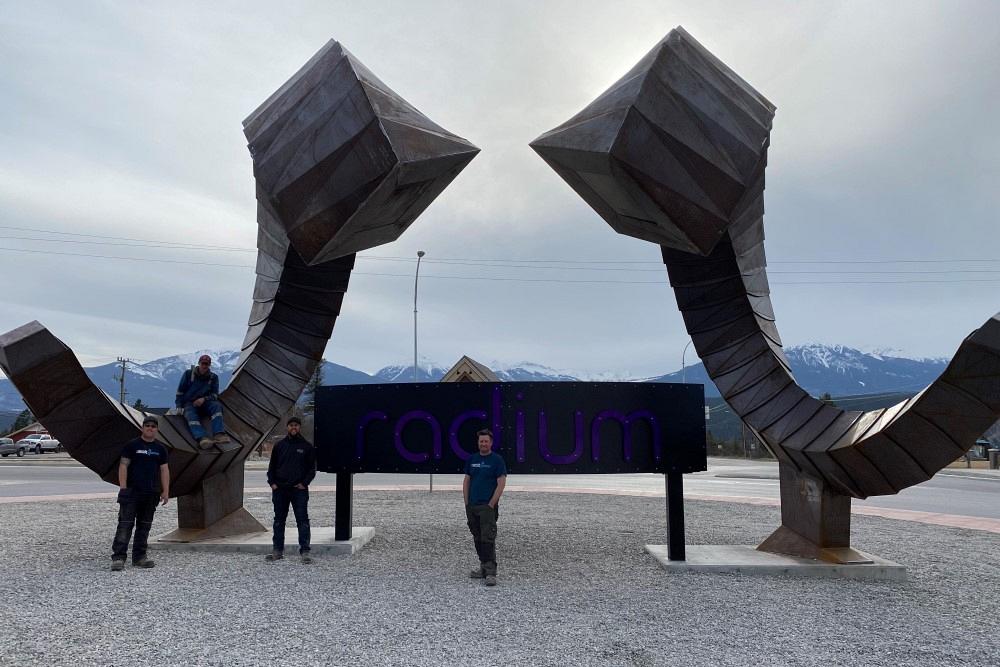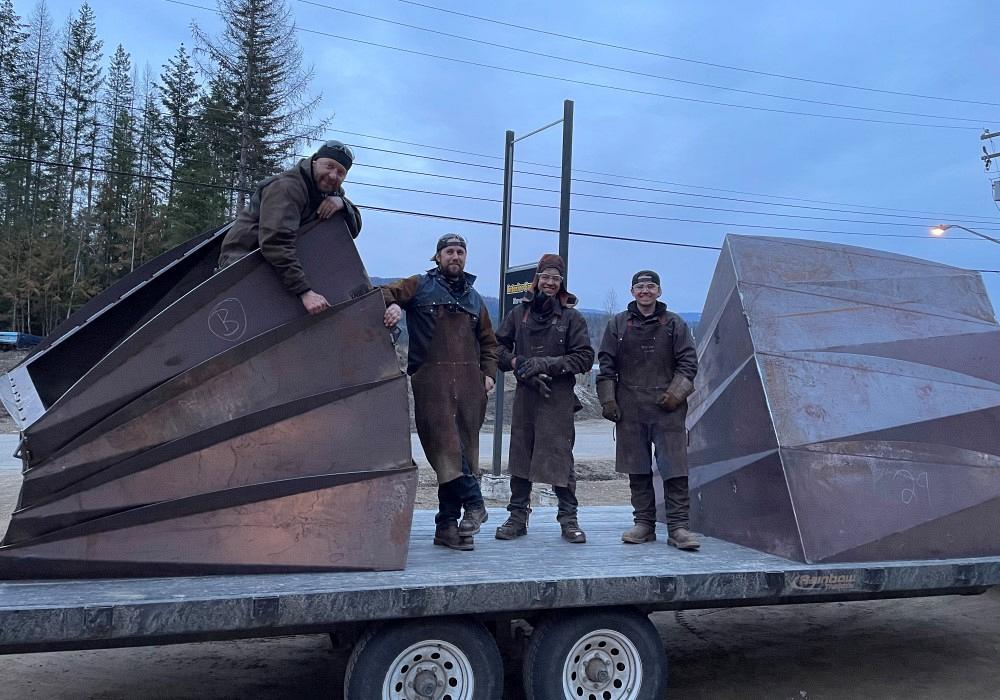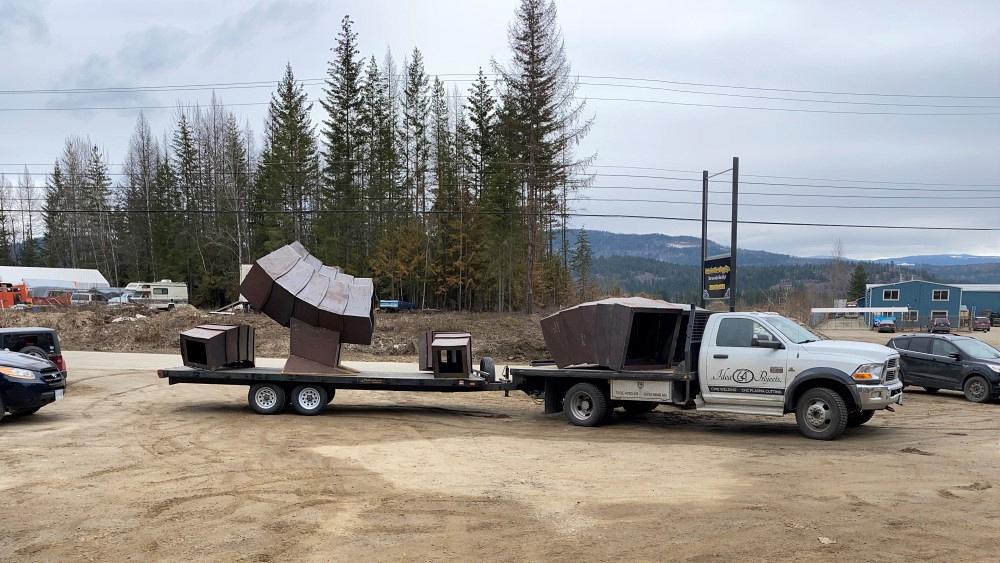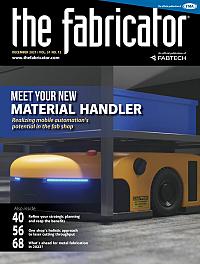Contributing Writer
- FMA
- The Fabricator
- FABTECH
- Canadian Metalworking
Categories
- Additive Manufacturing
- Aluminum Welding
- Arc Welding
- Assembly and Joining
- Automation and Robotics
- Bending and Forming
- Consumables
- Cutting and Weld Prep
- Electric Vehicles
- En Español
- Finishing
- Hydroforming
- Laser Cutting
- Laser Welding
- Machining
- Manufacturing Software
- Materials Handling
- Metals/Materials
- Oxyfuel Cutting
- Plasma Cutting
- Power Tools
- Punching and Other Holemaking
- Roll Forming
- Safety
- Sawing
- Shearing
- Shop Management
- Testing and Measuring
- Tube and Pipe Fabrication
- Tube and Pipe Production
- Waterjet Cutting
Industry Directory
Webcasts
Podcasts
FAB 40
Advertise
Subscribe
Account Login
Search
Raising horns in a large-scale steel art installation
Idea 64 Projects develops, builds standout bighorn mountain sheep art display for B.C. town
- By Rob Colman
- December 11, 2021
- Article
- Metals/Materials

Canada-based Idea 64 Projects personifies the iconic local history of bighorn mountain sheep by creating a standout steel art installation featuring large-scale curling horns in Radium Hot Springs, B.C. Images: Idea 64 Projects
Editor's Note: This article was originally published by Canadian Fabricating & Welding.
When most people think of metal and horns, it usually involves thrashing around at an Iron Maiden concert. But for Canada-based Idea 64 Projects owner Chris Meikle, it’s more likely to remind him now of the steel sculpture of the curling horns of a bighorn mountain sheep he and his team built for a traffic circle in Radium Hot Springs, B.C.
Salmon Arm, B.C.-based Idea 64 Projects worked on the project with Chris’s brother Adam, a local artist who conceived the design.
“This was quite an open bid,” said Meikle. “The community had a lot of options of what it could be. It’s great to have that creative leeway.”
Design Challenge
The idea behind the piece, which stands 20 ft. tall, 40 ft. wide, and 20 ft. deep, was to speak to both the history and the future of bighorn sheep in Radium. It was inspired by the Radium-Stoddart herd, which is 140 animals strong and sometimes comes off the steep slopes nearby, right into the village.
Getting the design right took a lot of work.
“It involved a lot of engineering,” said Meikle. “We first considered doing it as a skeleton made out of high-strength steel and then cladding it with a material that would be painted. But cost-wise that would have been astronomical. It was then that we looked at it from a different lens and decided to go with a unibody kind of shape that involved the cladding being the structure as well.”
The horns are made up of boxes that increase in size by about 2 in. with each successive box. The smallest has a 26-in. diameter, the largest over 6 ft.
“Each of the panels has a bend that offsets the top from the bottom slightly, creating the perfect spiral you see in the final construction,” said Meikle.
He chose 3/16-in. high-strength weathering steel (COR-TEN) for the construction.

The horns are made up of boxes that increase in size by about 2 in. with each successive box. The smallest has a 26-in. diameter, the largest over 6 ft.
“You just can’t replicate the colour you get using that,” he said.
Meikle used Solidworks for all the drawings; the drawings were done in consultation between Idea 64 Projects, Meikle Studios, Tegart Engineering, and Steve Baker. Once the concept was set, they did wind and snow load calculations with the software to make sure it was safe.
“Another important aspect of the design was that we wanted the horns to be freestanding,” he said. “I want people to wonder, ‘How is that actually standing?’”
As Meikle explains it, the structure itself is very rigid and held in place by a substantial amount of concrete supplied by Max Helmer Construction.
Fab and Assembly
Once the design was set, Meikle created the drawings to send out to Laser-Fab in Strathmore, Alta., which cut and bent most of the steel used in the horns.
“We cut the sign that stands between the horns along with the tips of the horns on our plasma machine, but Laser-Fab has a very precise press brake and fast laser-cutting capabilities that just made sense to use for this job.”
Meikle enjoys the partnerships he’s able to create with other fabricators.
“We are a CWB certified structural steel shop with fabricating capabilities,” he said. “But ultimately I think of us as a business that can think creatively through projects and manage them effectively.”
The actual fabrication of the horns certainly tested the abilities of the Idea 64 team.
“There was a ton of welding in that structure,” said Meikle. “I was welding from first thing in the morning until midnight every day, and it took a team of three of us a full three weeks to weld, with additional support from a fourth team member. It required a ton of welding, as well as grinding to prep for the weld. We went through eight 22-kg rolls of wire and four tanks of gases to get the job done.”
The process was complicated by the fact that LEDs had to be strung by electricians from Bolt Electric inside the horn just ahead of each part being welded on.
“There is 1,050 ft. of LED tape, 320,250 lumens across the two horns,” he said. “The effect is pretty amazing, though. The light is directional, inset so that you see the structure slightly differently from every angle.”
Meikle enjoys doing this sort of special installation.
“It’s important to me that I not be afraid to tackle a problem, not be afraid to find a way that I can get the result that I want. In the end, if you have that attitude, the client wins and the public wins because you find a way to create something remarkable that people will enjoy looking at.”
About the Author

Rob Colman
subscribe now

The Fabricator is North America's leading magazine for the metal forming and fabricating industry. The magazine delivers the news, technical articles, and case histories that enable fabricators to do their jobs more efficiently. The Fabricator has served the industry since 1970.
start your free subscription- Stay connected from anywhere

Easily access valuable industry resources now with full access to the digital edition of The Fabricator.

Easily access valuable industry resources now with full access to the digital edition of The Welder.

Easily access valuable industry resources now with full access to the digital edition of The Tube and Pipe Journal.
- Podcasting
- Podcast:
- The Fabricator Podcast
- Published:
- 04/16/2024
- Running Time:
- 63:29
In this episode of The Fabricator Podcast, Caleb Chamberlain, co-founder and CEO of OSH Cut, discusses his company’s...
- Trending Articles
Tips for creating sheet metal tubes with perforations

Are two heads better than one in fiber laser cutting?

Supporting the metal fabricating industry through FMA

JM Steel triples capacity for solar energy projects at Pennsylvania facility

Omco Solar opens second Alabama manufacturing facility

- Industry Events
16th Annual Safety Conference
- April 30 - May 1, 2024
- Elgin,
Pipe and Tube Conference
- May 21 - 22, 2024
- Omaha, NE
World-Class Roll Forming Workshop
- June 5 - 6, 2024
- Louisville, KY
Advanced Laser Application Workshop
- June 25 - 27, 2024
- Novi, MI



























